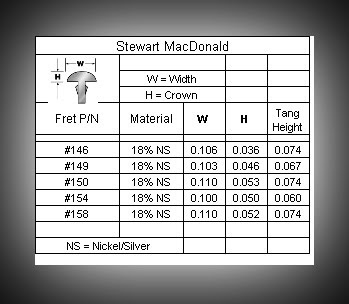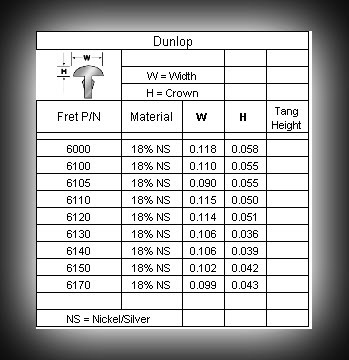Maple:The most common electric guitar neck wood, Maple has a uniform grain, it’s strong and stable, and it has less reaction from environmental changes than other hardwoods. Its tone is highly reflective, and focuses more energy onto the body wood. All things being equal, bolt-on Maple necks are less of a factor on the guitar’s tone and emphasize the body wood.
Mahogany:The even density makes stable necks, and the open pores make the neck a little more responsive than a maple neck. The Mahogany will absorb a little more of the string vibration than Maple will, and compresses the attack and the highs a little.
Koa:The tone is somewhere between Mahogany and Maple with a little sweeter top end.
Rosewood:Heavy, oily wood, a Rosewood neck will produce excellent sustain while also smoothening out the highs. Generally with greater sustain comes a brighter top end. This is not true of Rosewood. It mutes the high frequency overtones, producing a strong fundamental that still has the complexities of mid and low mid overtones.
Wenge:Stiff, strong, and stable, Wenge trims some high overtones like Rosewood does, while resonating more fundamental mids and low mids due to it’s multi-density “stripes” combing away a little more of the mid and low mid overtones.
Fretboard Woods: Perhaps more significant than neck wood, the fretboard is the place your string launches from. It is the “bridge” on the other side. Fretboard differences are as dramatic as those between a hardtail and a tremolo.
Maple:Very bright and dense, Maple is highly reflective. When used on a fretboard, Maple encourages tremendous amounts of higher overtones and its tight, almost filtered away bass favors harmonics and variations in pick attack.
Rosewood:The most common fretboard, Rosewood is naturally oily, and works well for any surface that sees frequent human contact. The sound is richer in fundamental than Maple because the stray overtones are absorbed into the oily pores
Ebony:
Ebony has a snappy, crisp attack with the density of Maple, but with more brittle grains, oilier pores, and a stronger fundamental tone than Maple. It has a tremendous amount of percussive overtones in the pick attack, that mute out shortly thereafter to foster great, long, sustain.
Pao Ferro:Quite simply, Pao Ferro is a wood that falls between Rosewood and Ebony, and the tone follows suit. It has a snappier attack than rosewood, with good sustain, and its warmer sounding than Ebony. Some consider Pao Ferro to represent their favorite aspects of the two.
Extended Range notes:Basswood is not stiff enough for a tight, well-defined low end, especially with a shorter scale. Low notes will have good harmonics, and a good fundamental, but a midrangey tone overall.
Alder has a tighter low end than Basswood, with slightly deeper lows.
Swamp Ash is stiff enough for a crisp low end without becoming muddy. The open pores help resonate low tones. Higher overtones become more apparent in lower registers, for good harmonic content and a sharper attack.
Mahogany’s warm lows and a thick sound overall make extended lows very full and can produce muddiness in the signal. The low notes are very strong and sometimes overbearing for a pickup. A bright, crisp active pickup that thins out the low end could be a good combination.
Walnut’s tight low end and combed midrange dynamics make it well suited for extended range. It won’t get muddy unless it’s a poor specimen with softer yellowish orange areas.
Like Walnut, Koa is a good Mahogany alternative. It will have a tighter low end with less muddiness. The slightly dampened higher overtones will produce a stronger fundamental than Walnut at the expense of a sharper attack.
Korina should respond to extended lows in the same manner as Mahogany. Soft Maple’s dull lows also mean no muddiness in the extended range. It can be a good alternative to Basswood if that’s your main concern. The pickups will have to compensate for the bright upper mids.
Hard Maple will have the tightest lows for the extended range. Low notes will have a sharp attack, plenty of harmonics, and excellent sustain.
Spruce, while capable of reproducing extended lows, is too soft not to get mushy. A neck through, a laminated top, or both would provide the needed rigidity while still highlighting the good points of Spruce. Any laminated top 1/8” or thicker will improve the tightness of the low end. The existence of the lamination will tighten any body’s muddiness. The same qualities hold true in the laminate top descriptions.
Neck Through notes:The neck through construction method produces excellent sustain. The neck wood strongly influences the tone of the guitar, because it occupies perhaps the most important part of the body: the center. There is a nasal, thinner quality to the sound, often augmented with a figured wood top. Your side woods make up far less of the tone than on a bolt on or set neck guitar. You first have to estimate what that neck wood’s tone is like as a body wood, and then accentuate or counteract that with your side woods. So a Hard Maple neck through will be very bright and cutting. If you want to warm it up you’d use Basswood or Spruce sides. But if you like that quality, you might use Ash or Soft Maple sides. The effect is very different than the laminated top sound. A maple top on Basswood is nothing like a Maple neck through with Basswood wings, which sounds more like a Maple body. Generally, the softer woods excel as sides because they add back some low end resonance missing in the construction method, while dampening the highs.













